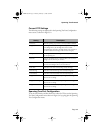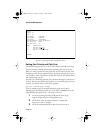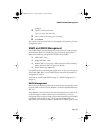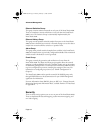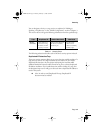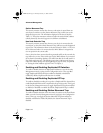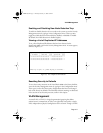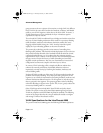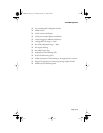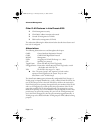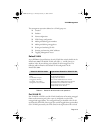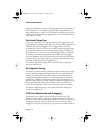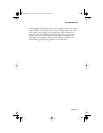Advanced Management
Page 5-12
group presents to the user a picture of connection to a single LAN, it is different
from a LAN in the sense that it localizes the broadcast, multicast, and flooded
traffic to parts of LAN segments, rather than to the whole LAN. In essence, a
VLAN segment/group can be considered the Layer-2 broadcast segment
equivalent of a Layer-3 network.
The real need for VLANs in traditional Layer-2 bridges and switches arises from
their use of a basic flooding mechanism which results in unnecessary flooding
traffic (broadcast, multicast, and unknown destination traffic) that causes
clogging and band-width wastage in a LAN. As today’s networks expand
rapidly, the Layer-2 flooding problem can become a bottleneck.
The present-day technology provides various means of controlling these
flooding traffic problems, which mainly include deployment of Layer-3 devices
that provide broadcast firewalls. Other methods include IP multicast control,
customized packet filtering, etc. It is evident that these solutions press the
requirement for Layer-3 routers. As all of us know, more and more deployment
of legacy routers increases the latency of traffic forwarding and eventually
degrades network performance. Also, the cost of maintenance increases and
configuration becomes more complex with more Layer-3 devices.
In contrast, VLAN technology offers a simple and efficient solution that
enhances the network performance, bandwidth utilization, and more
importantly, network security, by localizing the broadcast, multicast, and
unicast flooding traffic.
Port based VLANs provide one of the many VLAN approaches that solve the
problem of unnecessary flooding. They allow ports to be grouped in VLAN
segments, so as to limit the transmission of incoming broadcast, multicast, and
unknown destination address frames in a VLAN segment to only those ports
that are grouped in that segment. This grouping produces selective flooding,
rather than flooding to all ports in the system. This, in turn, greatly reduces the
unnecessary flooding traffic in a network.
Other VLAN approaches include MAC-based VLANs and policy-based
VLANs. The present version of the IntraChassis 9000 supports port-based
VLANs in compliance with IEEE P802.1Q/Draft 8 standards. The following
sections of the chapter describe the concepts and details needed to configure
and manage VLANs on Intrachassis switches.
VLAN Specifications for the IntraChassis 9000
The present IntraChassis 9000 supports the following IEE P802.1Q features:
GLXY9.book Page 12 Thursday, February 17, 2000 3:04 PM




